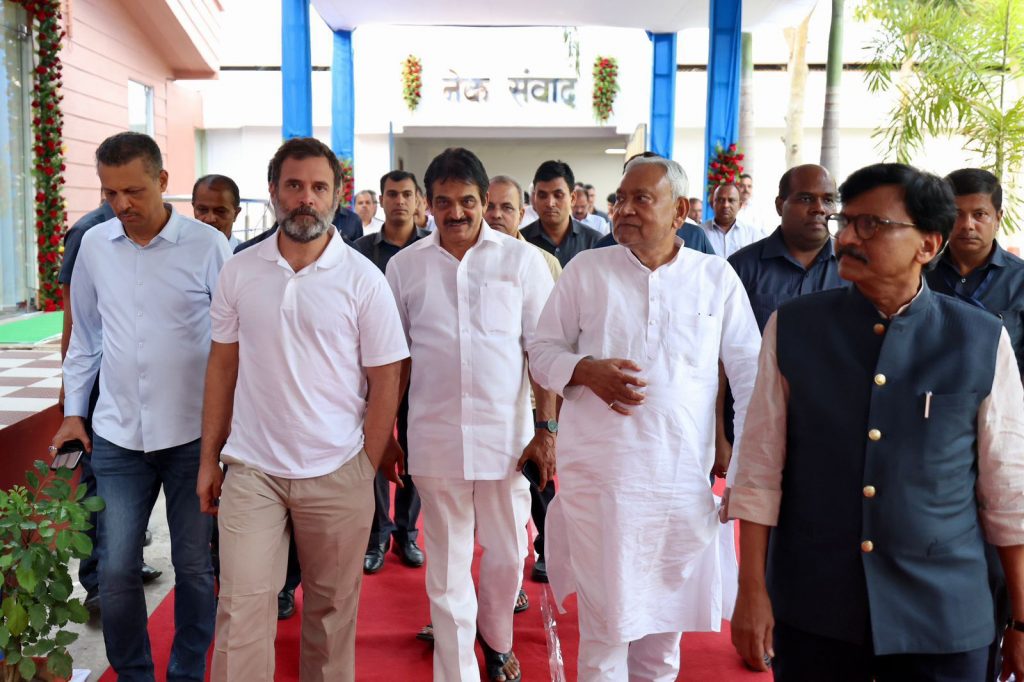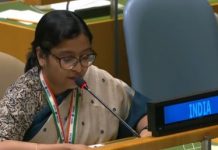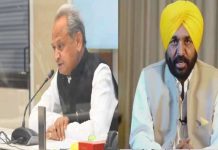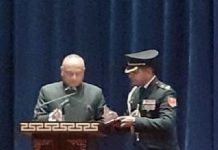
Most regional satraps now perceive an “existential threat” over harassment tactics used by government through agencies like the Income Tax, ED and CBI against non-BJP parties, and this seems to have prompted over 15 parties to close ranks at Patna
Bihar Chief Minister Nitish Kumar and his RJD deputy Tejashwi Yadav hosted a meeting of about 15 non-BJP Opposition parties on June 23 in Patna, which is seen as the beginning of the Opposition parties’ cooperation in order to challenge the Narendra Modi-led BJP in the upcoming 2024 Lok Sabha elections. The basic framework and strategy for Opposition unity is said to have been discussed at the meeting, with the contentious issues of seat sharing and leadership questions to be resolved at the Shimla meeting scheduled for 12 July.
Since the adoption of the Constitution of India and the holding of the first General Elections in 1952, many political figures, political theorists, and political scientists have undoubtedly emphasized the establishment of a two-party system in the Indian polity; however, the multiparty system has prevailed and persists to this day. One-party rule of Congress persisted at the Centre and in many states for about 25 years, from 1952 to 1977, during which time multiple Opposition parties struggled to coexist. The Janata Party, which ruled India from 1977 to 1979 and experienced numerous splits, brought together the majority of the non-Congress Opposition parties during the post-Emergency period. There had also been some splits in Congress.
The Janata Party experiment’s failure dealt a fatal blow to efforts to establish a two-party system. While the recurrent phenomenon of splits in the Janata Party and the Congress in the 1980s not only sped up the transition to a two-party system, it also contributed to the exploding number of regional satraps, some of whom became significant players in local politics. In the final years of the 1980s, coalition governments emerged at the Centre and in many states of the India Union as a result of the decline of the one-party dominance phenomenon, which followed the Congress party’s weakening. In some ways, this was similar to the late 1960s.
By the 1990s, the phenomenon of a coalition government, whether at the federal or state level, had taken over Indian politics. During this time, neither the Bharatiya Janata Party (BJP) nor the Congress party were able to form a government on their own at the federal level, which opened the door for the formation of coalition governments known as the United Democratic Front (UDF) and National Democratic Alliance (NDA). Nevertheless, the BJP’s electoral boom in the latter half of the 1990s allowed it to bring together over 20 parties to form the NDA coalition government, which held office for the entire five-year term.
With the aid of coalitional regional parties and a strong showing in the 2004 Lok Sabha elections, the Congress party was able to overthrow the NDA and establish the United Progressive Alliance (UPA) as the central government. From 2004 to 2014, the UPA served two full terms as the government at the Centre. However, the UPA’s final years in office were marred by scandals and accusations of corruption, and from 2012 on, Anna Movement-led demonstrations against the UPA- II government began. According to some media reports, both the RSS and the BJP took advantage of the situation and made an effort to use public sentiment for their own political gain.
In the 2014 Lok Sabha elections, the BJP ran the party’s campaign under the direction of Narendra Modi, who was Gujarat’s chief minister at the time. The BJP easily won a majority of seats for itself. At the federal level, an NDA government with BJP leader Narendra Modi as Prime Minister was put in place. Gradually, BJP governments also came to hold the reins of power in numerous states. However, by weakening the non-BJP state governments, PM Modi altered the grammar of Indian politics, and the BJP’s massive victory in the 2019 Lok Sabha elections propelled the party toward one-party rule in the Indian polity.
Most regional satraps now perceive an “existential threat” as a result of harassment tactics used by central agencies like the Income Tax, Enforcement Directorate, and CBI, primarily against non-BJP parties, and strategies to overthrow elected non-BJP state governments. This is what prompted more than 15 parties to recently come together in Patna to present a challenge to the BJP in the Lok Sabha elections of 2024. The name of the new alliance, however, will be decided at the Shimla meeting of these parties, and according to some media reports, it is anticipated to be Patriotic Democratic Alliance (PDA).
Regional parties’ coalition is not very common or simple in India due to the multiparty system’s troubled past and current influence on the country’s polity. The choice of regional parties to join forces with or form alliances with national parties is influenced by a variety of factors, including ideological compatibility, electoral prospects, public opinion, leadership dynamics, policy concerns, and bargaining power. If regional parties join forces with national parties that are perceived as adversarial or incompatible with their interests or values, they may encounter opposition or backlash from both their supporters and detractors. It is therefore unlikely that all regional parties in India would consent to a two-party system by unifying their identities with the BJP or the INC. A scenario like that would necessitate a significant change in India’s political culture and environment, which is distinguished by diversity, rivalry, and coalition-building. However, what occurs in Shimla and afterwards is still interesting to watch.













